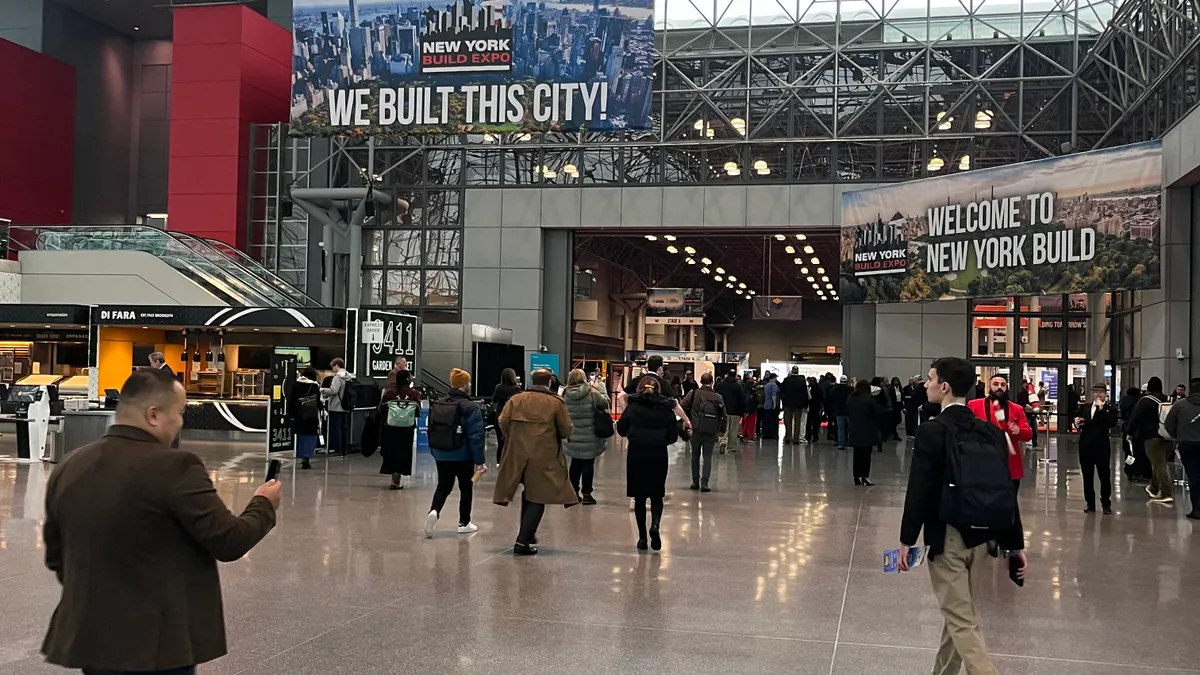Multibillion-dollar civil projects present a significant opportunity for small, savvy firms to access chunks of grant money, according to panelists during the New York Build Expo at the Javits Center in New York City last month.
The session explored the landscape of infrastructure development, where small businesses stand to gain significant footholds. Federal and state governments have long been significant players in funding infrastructure projects.
Initiatives like the the Federal State Partnership Grant Program for passenger rail projects and the Mega Grant Program — established to fund large, complex highway, bridge, freight, port passenger rail and public transportation projects — offer avenues for accessing critical infrastructure development money.
“They are expected to generate national and regional economic mobility and safety benefits, including reliability of movement of freight and persons across rural and urban areas,” said Rena Barta, vice president of transportation infrastructure at Parsons Corp., a Chantilly, Virginia-based technology engineering firm. “We’re very lucky in this [New York] region to have some of those grant recipients.”
Some of the major New York projects with this type of grant funding include:
- Second Avenue Subway Station Phase 2.
- Hudson Tunnel Project.
- Addition of a multimodal community connector roadway at the Cross Bronx Expressway.
- East River Tunnel Rehabilitation Project.
Opportunities for smaller firms
While big infrastructure contracts often go to major players in the construction industry, these large projects also generate opportunities for smaller contractors, said Ryan White, transportation planning lead at Jacobs, a Dallas-based construction services company.
“I think it’s important to remember that these projects, while large, should not be thought of in isolation,” said White. “Remember that these projects are part of a system. There are other ancillary benefits.”
That’s because an essential aspect of many projects to qualify for these grants in the first place is the inclusion of Disadvantaged Business Enterprises. Certification as a DBE not only opens doors to contracting opportunities but also serves as a testament to a business’s commitment to diversity and inclusion.
DBE certification for these smaller firms can often lead to an immediate uptick in contracts, said Lizbeth Rodriguez-Rios, Northeast region director at the Small Business Transportation Resource Center, a program under the U.S. DOT that provides assistance to small and disadvantaged businesses.
Rodriguez-Rios shared the story of a Massachusetts-based contracting company providing services related to airport operations with about $200,000 in annual revenue. After securing DBE certification, the company won numerous contracts, expanding its revenue to about $3 million, solely from DBE-related projects, she said.
“Many of these projects require [general contractors] to bring small businesses, just to allocate some funding,” said Rodriguez-Rios. “We do not have enough DBEs and this is the opportunity.”
White agreed that even companies the size of Jacobs, for example, also struggle in finding qualified DBE companies from time to time.
For smaller firms to find these opportunities, Barta highlighted professional associations, where contractors or consulting engineering firms can meet these big agencies. Rodriguez-Rios also suggests matchmaking sessions that facilitate face-to-face interactions. These events pave the way for collaboration between small businesses and larger firms.
“Once you have the DBE, [the next step] is just to identify and do the market research about the projects that require DBE,” said Rodriguez-Rios. “You can leverage [the certification] right now.”














